#coldingham
Text
THE MONASTERIES OF SCOTLAND - CLAN CARRUTHERS CCIS
THE MONASTERIES OF SCOTLAND
PREFACE
Many years ago I became fascinated by the re-introduction of the monastic life in the Church of England having in 1956 read a book by Peter Anson entitled “The Call of the Cloister”. Anson had been a novice in the community of Anglican Benedictines which had been founded in 1896 by one Aelred Carlisle as an attempt to once again establish the Benedictine…
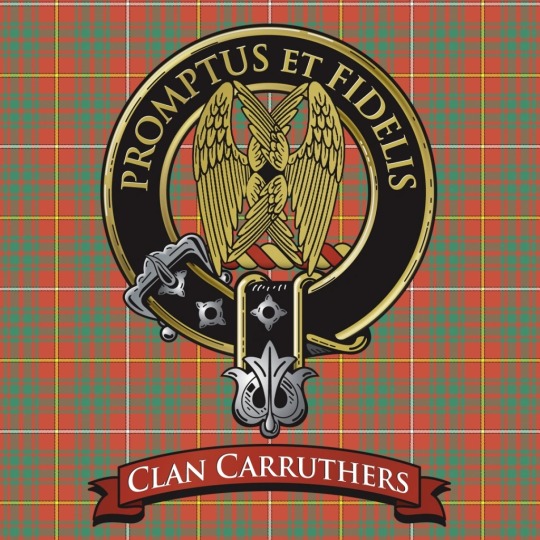
View On WordPress
#abroath abbey#aELRED cARLISLE#ANCIENT AND HONORABLE CLAN CARRUTHERS#APPLECROSS#ardchattan priory#aroath abbey#BARDSEY#CLONMACHNOISE#CO DONELGAL IRELAND#Coldingham#crossraguel cluniac#culdees#CULDRRS#deer abbey#fybie priory#iona#kilwinning tironian abbey#Oronsay priory#restenneth priory#saddel prioty#ST AIDAN#ST BEDE#ST COLUMCILLE#ST NINIAN#ST PACHOMIUS#st thomas becket#TALLAGH#trinitarian friars
0 notes
Text
Visiting the Scottish Borders - Part 2 Coldingham & St Abbs.

View On WordPress
0 notes
Text









3 bedroom house for sale on Coldingham Avenue, Yoker, Glasgow
Asking price: £290,000
Sold price: £335,000
1 note
·
View note
Text










'The Creel Path' Ancient Holloway, nr. Coldingham, Scottish Borders
#routeway#holloway#landscape#routes#ancient routes#outdoors#wild places#ancient trackways#tracks#trees#ancient cultures#archaeology#paths#scottish borders#creel path
155 notes
·
View notes
Text

More Saints of the Day January 31
St. John Bosco
St. Adamnan of Coldingham
St. Aidan of Ferns
St. Athanasius
St. Bobinus
St. Cyrus
St. Domitius
St. Eusebius
St. Francis Xavier Bianchi
St. Geminian
St. Julius of Novara
St. Madoes
St. Marcella
St. Martin Manuel
St. Metranus
St. Nicetas
Sts. Saturninus, Thrysus, & Victor
St. Tarskius
St. Trypbaena
St. Ulphia
#catholic#saint#martyrs#pray for us#moresaintsoftheday#holy family#bronze sculpture#dzstatue#lost wax cast
13 notes
·
View notes
Text
On October 8th in the year 1097 Edgar or Étgar mac Maíl Choluim seized the throne of Scotland.
Nicknamed Probus, "the Valiant" he was the son of Malcolm III and Margaret, the sister of Edgar the Aethling. When Malcolm was killed at the Battle of Alnwick, in 1093, a power struggle resulted with Malcolm's brother Donald Bane becoming King of Scotland. Malcolm's family were exiled to England. In 1095, while assisting William Rufus in the North fighting the rebel Robert de Mowbray, William nominated Edgar the rightful King of Scotland. Edgar had to wait until 1097 when, with assistance from his uncle Edgar the Aethling, he advanced into Scotland, forced out Donald Bane and took the Scottish throne. He bears the distinction of being the first King of Scotland to be of mixed Gaelic and Anglo-Saxon blood.
The Annals of Tigernach record that Edgar had Donald Bane's eyes put out, which isbacked up by another Scottish chronicler John of Fordun , who stated that Donald was "blinded, and doomed to eternal imprisonment ". He was then held captive at Rescobis (Rescobie), in Forfar, where he died, in 1099.
In 1098 a treaty with Magnus III “Barefoot” in 1098 allowed the Norse to regain many of the Western Isles. The marriage of his sister Edith to Henry I of England in 1100 brought peace and encouraged the settlement of Anglo Normans in the Scottish lowlands.
Edgar abandoned Dunfermline as his seat of power and made Edinburgh Castle his base. He was a highly pious man, brought up religiously and was a generous benefactor of the church. and was compared to Edward the Confessor. Edgar's religious foundations included a priory at Coldingham in 1098, associated with the Convent of Durham.
Edgar himself never married and thus had no real heirs, prior to his death, he divided his realm between his brothers. The eldest of these, Alexander, was to inherit the throne while his younger brother David was to receive Lothian and Strathclyde.
King Edgar died on 8th January, 1107, at Edinburgh Castle* aged around just 33 and was buried at Dunfermline Abbey in Fife, which was to become the mausoleum of Scotland's Kings.
*George Buchanan in his Rerum Scoticarum Historia says the following:
...‘the Son of Malcolm III … He builded the Priority of Coldingham. He was a good Prince. He died at Dundie, without Succession, and was buried at Dumfermline’.

The portrait is one of ninety-three bust-lengths commissioned to decorate the Great Gallery at Holyroodhouse, Edinburgh. It is painted by Jacob de Wet II, a Dutch artist working in Scotland from 1673.
11 notes
·
View notes
Note
can you write a yeonjun fic where he wakes up and doesn’t feel good but still carries on without mentioning anything to the others. and he like tries all day to hide that he’s feeling unwell but then like in the middle of the day it just gets too overwhelming and he starts getting emotional because he’s pressured to always work hard and be perfect. Leans on a wall and says ‘I don’t feel so good’ and the other members are shocked and then find out that he has a really high fever and then they have to bring him home somehow even though he’s feeling very dizzy. When they are home they baby him until he falls asleep 🥺
I'm so sorry this took so long. I forgot it in my drafts.
Also I turned it angsty for a hot minute haha
Warning: fainting | angst
Yeonjun wasn’t feeling good at all. He woke up with a headache and a stuffy nose. His skin was clammy and clothes were sweat soaked. He wasn’t feeling good yesterday. Always sneezing every five minutes, he knew he would come down with something. He drank a lot of tea and even took vitamins to not get sick, but it was for no use. Now he’s sick, running a fever and it’s hard to breath with a stuffy nose. He didn’t plan on saying anything. They're all too stressed with the new comeback and Yeonjun himself wasn't satisfied with his dancing yet. So there's no way he would miss a single day of practice. It's just a cold. He could power through that.
He could make it through, he really could. At least that’s what he thinks.
Somehow Yeonjun managed to get out of bed and wash himself up. It took longer than usual and his whole body was aching either each step he took. He couldn't even manage to eat anything. He rested his head on the table and closed his eyes. There was a hand on his back. Rubbing up and down. The hand felt cold and Yeonjun could almost melt into the touch. It felt so good against his burning skin.
"Are you okay? You're rather warm.." Soobin asked.
At that question Yeonjun sat up and smiled. "I'm fine. Just took a hot shower." He waved Soobin off.
The leader knew better than to ask again. Knowing Yeonjun that would only built his walls up higher. So the leader rather just offered him silent comfort and made him some tea. Yeonjun gladly accepted it. Yes. He could definitely make it through the day.
-
Currently they’re all at dance practice. Yeonjun knows he’s lacking behind, but it’s so hard to move. His whole body feels too heavy to move, his legs wobbly and he’s sure he isn’t even taking the right steps. Sudden dizziness comes up and within a second Yeonjun bumps against Taehyun and falls on the ground. Sitting on the ground he closed his eyes for a moment, trying to will the dizziness away. It somehow worked, but now that he’s looking up he noticed the annoyed look of the members. They don’t say anything, but Yeonjun knows how annoyed they must be with him right now. The singer tries to stand up, his legs wobbly, but slowly he stands up again. As soon as he stands the dizziness comes back again. He bites his lips, he can’t say anything. They’re annoyed with him anyway. And after all he had to be perfect. He rarely makes mistakes, always being the one who tries the hardest no matter what. The one who had high standards for himself. The one who outdid most of the other trainees and since then the company had high hopes for him. Always expecting the best from him and Yeonjun did too. There's no way he could lack or slow down anyone. This wasn't him. He hated making mistakes even though he knows right now it's because of his poor condition. To him that's no excuse. If he wasn't perfect what would the members think? What would MOA think of him? No, he couldn't disappoint anyone. But he already did disappoint his members. He's Coldingham them down at this moment. Yeonjun couldn't stop the thoughts. Tears welling up his eyes, out of frustration. He doesn’t want to disappoint, but he also feels like passing out every minute. Before the music started Yeonjun decided he had to tell at least someone. Taehyun would understand him and that way he could also explain why he bumped into him. He's sure of that.
“Hyun..?” Yeonjun speak in a gentle voice as he taps Taehyun on the shoulder
“What?” Taehyun tries to sound calming, but the annoyance is clearly visible.
"Sorry." Yeonjun let his head hang low, maybe he could make it through the practice.
A bit into the practice it was clear that Yeonjun got worse by any minute that passed. His movement was slow and messy. Yeonjuns head was pounding and the dizziness got worse. Black spots appear in his vision. He tried to squeeze his eyes shut to make it stop, but it didn’t work. The black spots are only getting worse. The room was spinning and his legs wobbled underneath him. Yeonjun tried his hardest to work through the practice, he really did. But, his condition got only worse. He felt like his head was getting stabbed by someone. Pounding so hard and the dizziness making him nauseous.
Yeonjun stopped in his tracks. He couldn’t anymore. He feels so bad and he’s sweating more than usual. He’s sure his fever got higher than it was this morning.
As Yeonjun suddenly stopped, the rest of the members looked in confusion and annoyance at the oldest.
“What is it this time?" Beomgyu rolled his eyes.
Yeonjun squeezed his eyes shut, trying to will the tears and dizziness away. However, it got too much for him. The room spinning and his legs wobbly. Yeonjun leaned on the wall behind him and tried to keep air into his lungs. It didn't work.
"I don't feel so good.." he choked out.
Suddenly Yeonjun fell down, they all expected to hear a loud thud. However, they didn’t hear anything. Only seeing how Soobin somehow had managed to catch the oldest and now sits down on the floor with him.
Carefully Soobin places Yeonjun's head on his lap.
“Kai get the manager and Taehyun, hold his legs up.” Soobin almost spat. The members never heard that tone come out of him before. It was obvious that the leader was extremely worried.
Hueningkai ran as fast as he could and Taehyun quickly lifted up Yeonjun's legs a bit to get his blood flowing. Meanwhile Beomgyu was really overwhelmed with the situation and all he could do was kneel down beside Yeonjun and gently hold his hand, giving it a squeeze. Tears welled up in the younger's eyes. He looked up at Soobin.
"Hyung.." Beomgyu bit on his lips to stop himself from crying.
"It's okay. Yeonjun will be okay." Soobin said calmly.
Slowly Yeonjun woke up. His eyes opened and closed, he’s falling in and out of consciousness. Trying his hardest to stay awake.
“Yeonjun? Hey? Wake up.” Soobin spoke softly as he stroked through the olders hair.
Slowly Yeonjun was completely awake again. A bit out of it because of what happened, but at least he was there again.
“You’re burning up...” Soobin said with a frown.
“.. ‘m sorry.” Yeonjun slurred, too weak to actually speak up.
“You don't need to be sorry. We should be..I'm sorry, Hyung." Taehyun apologized
Yeonjun only nodded and reached his free hand out to Taehyun. The younger one immediately took it and squeezed his Hyungs hand. Yeonjun tried his best to smile softly to reassure the members.
It only took a few minutes until Kai returned with the medics and one of the managers. The Maknae was rather happy that he didn't had to stay with them. He would have started crying as he always gets really worried about his Hyungs. All he did was give Yeonjun a bottle of water. As soon as the situation is eased up he would definitely cuddle with his Hyung.
The members decided to give Yeonjun some room. So only one of them stayed with Yeonjun. Of course it was Soobin. Beomgyu wanted to stay too but he couldn't keep himself from crying so Taehyun decided to take Beomgyu and Kai out of the room to have them calm down.
It turned out that Yeonjun that a really high fever. Not concerning enough to take him to the hospital but he definitely needed some rest. The manager and Soobin decided that practice would end for all of them today as the event was hard on all of them. Yeonjun wanted to protest so badly but he just couldn't. His body and mind were too exhausted to let him speak.
On the way back in the car Kai was seated next to Yeonjun. Having his arm wrapped around his Hyung. Yeonjuns head rested against Kai's chest. His eyes closed. It seemed likely he was sleeping but the dizziness was too bad to actually make him fall asleep and the moving of the car didn't help at all. Yeonjun was more than grateful that Kai held him steady. He knew he couldn't hold himself up right now.
A few hours later all five members laid down in one bed. Yeonjun in the middle. He did it before. It was a tight fit but they all enjoyed it. Yeonjun nuzzled his head into Beomgyus cheat while Soobin spooned him from behind. Kai and Taehyung one each at Beomgyus and Soobins side. With how cold Yeonjun was feeling he enjoyed the warmth of the members.
"Next time tell us if you feel bad." Taehyun suddenly spoke up.
Yeonjun hummed "I can't.."
"What do you mean?" Kai asked surprised.
Soobin knew what was going on inside of his Hyungs head so he gave his wait a reassuring squeeze. Yeonjun sighed at that.
"I feel like I'm disappointing everyone..If I can't be perfect what am I even here for? I just can't.." Yeonjun stopped himself there. He bit down on his lower lip.
"You could never disappoint us. I don't care about anyone else. They don't count. But I can speak for all of us. You could never disappoint us." Beomgyu spoke as he pressed a soft kiss on Yeonjuns head.
"And Yeonjun? You are already perfect. You're so talented and hard working. You always give your hardest. Sometimes we make mistakes and that is okay. You are human. You're allowed to make mistakes." Soobin said softly.
"And your dancing is amazing. Your vocals are amazing. I don't think we need to speak about your visual because you look handsome too." Taehyun laughed to lighten up the mood.
"Hyung we love you." Kai joined in. Smiling brightly.
Yeonjun couldn't hold back the tears at this point. "You idiots make me cry. I love you." Yeonnun laughed with tears in his eyes.
He knew he had a hard way to goo to finally accept help but he knew he always could count on the members.
14 notes
·
View notes
Photo
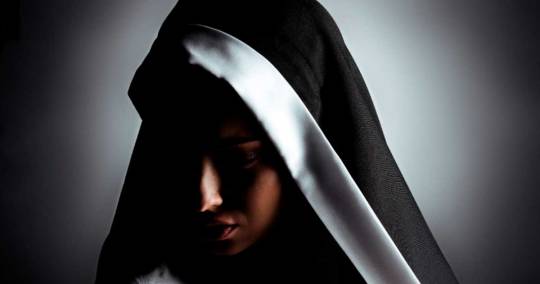
Saint Aebbe Cut Off Her Nose to Spite Her Face
If you’ve ever heard the saying “cut off your nose to spite your face,” have you ever wondered where it came from? Legend has it that Saint Aebbe, also known as Saint Ebba or Æbbe the Younger, was a pious woman who disfigured her face to protect her chastity from invading Vikings in the 9th century, giving birth to this famous saying in the process.
This bizarre English idiom is still in use even today, though its modern-day meaning has different connotations to the original. These days it is used to describe a self-destructive act or overreaction, usually motivated by anger or revenge, and whose ultimate consequence is to do more harm to oneself rather than the offending party.
Apparently, a group of Vikings, led by children of Ragnar Lothbrok, arrived on the shores of Scotland around 870, and ended up burning and sacking Coldingham. When Aebbe the Younger, the Abbess of Coldingham Priory on the southeast coast of Scotland, discovered they had arrived, she cut off her own nose in a desperate bid to avoid being raped by the invaders.
She was also said to have convinced the other nuns to cut off their noses. The sight encountered by the Vikings must have been truly hideous. Nevertheless, while they escaped forcible violation, their actions still irked their assailants who continued to burn down the convent. The nuns were killed in the flames. Their purity had been preserved but they ultimately came to an untimely demise. In some accounts, the day of their martyrdom is given as the 23rd of August.
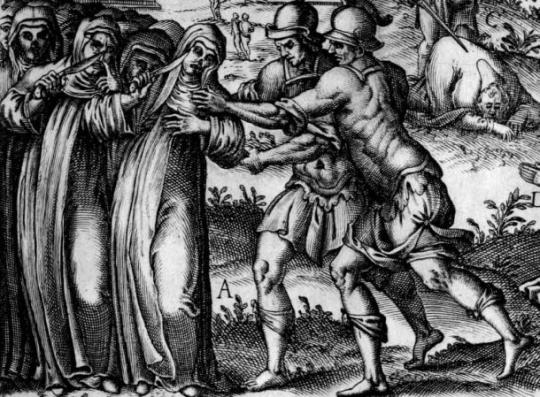
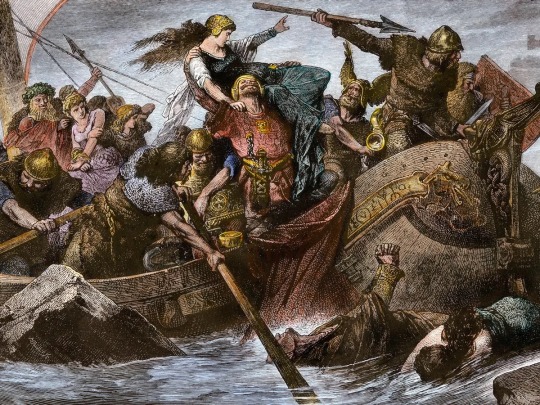
These events were first recorded in Chronica Majora by the Benedictine monk Matthew Paris (circa 1200 to 1259), written over 300 years after the events actually took place. They also made an appearance within the Flores Historiarum , though it has remained impossible to prove, or disprove, these accounts for lack of archival evidence. It’s also impossible to know if this was truly the origin of the saying.
While it sounds like a truly horrific turn of events, nose mutilation was actually a pretty common form of punishment and torture throughout ancient world. Known as a rhinectomy, the removal of the nose was a type of corporal punishment in ancient Egypt, whereby the noses of certain criminals were cut off as a permanent sign of their crimes and they were then banished to Rhinocolura. There are also accounts from the Persian Empire, ancient Greece, medieval Europe and pre-Columbian America.
According to Plutarch’s De Exilio, King Lysimachus of Thrace cut off the nose and ears of a subject who insulted his wife. He also gouged out his eyes to ensure the message was received loud and clear. Heracles in Thebes was given the nickname Rhinokoloustes, meaning “the nose-docker,” since he reportedly had the noses removed of all messengers sent by Orchomenos to demand tribute. Even the Old Testament recommended rhinectomies in the case of prostitution.
By Cecilia Bogaard.
#Saint Aebbe Cut Off Her Nose to Spite Her Face#Saint Ebba#vikings#viking raiders#ragnar lothbrok#scotland#history#history news#ancient history#ancient culture#ancient civilizations#viking history
9 notes
·
View notes
Text
SAINT OF THE DAY (June 23)

St. Æthelthryth, also known as Etheldreda or Audrey, especially in religious contexts, was Queen of Northumbria.
Her father was King Anna of East Anglia.
Her siblings were Wendreda and Seaxburh of Ely, both of whom eventually retired from secular life and founded abbeys.
She was born at around 630 in Exning, near Newmarket in Suffolk.
While still very young, she was given in marriage by her father to Tondberct, chief or prince of the South Gyrwe. He was a subordinate prince who gave her a piece of land locally known as the Isle of Ely.
She managed to persuade her husband to respect her vow of perpetual virginity that she had made prior to their marriage.
Upon his death in 655, she retired to the Isle of Ely, which she had received from Tondberct as a morning gift.
Etheldreda was forced to marry again out political convenience, this time to Ecgfrith, King of Northumbria.
Throughout her 12 years of marriage, she kept her virginity. She gave much of her time to devotion and charity.
St. Wilfrid was her friend and spiritual guide. He helped to persuade her husband that Etheldreda should live for some time in peace as a sister of the Coldingham nunnery, founded by her aunt, St. Ebb.
During this time, she only ate once a day, except on feast days or while she was sick, and wore only clothes made of wool.
After midnight prayers, she would always go back to the church and continue praying until morning.
Etheldreda took pain and humiliation as a blessing.
On her death bed, she thanked God for an illness that had painfully swollen her neck, which she considered to be punishment for having vainly worn necklaces with jewels as a young lady.
She died on 23 June 679. She was buried in a wooden coffin, as she had asked.
When her body was moved to a stone coffin, it was found incorrupt and her neck was perfectly healed, according to physicians.
She is the patron saint of throat and neck complaints.
3 notes
·
View notes
Text
International Queens/Empress Consorts (1/?)
Margaret Tudor, Queen of Scotland (28 November 1489-18 October 1541)
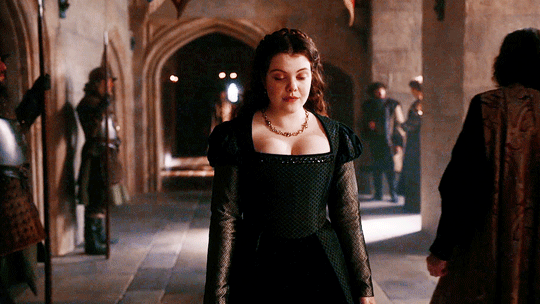
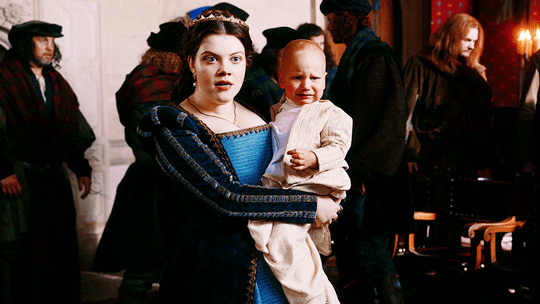
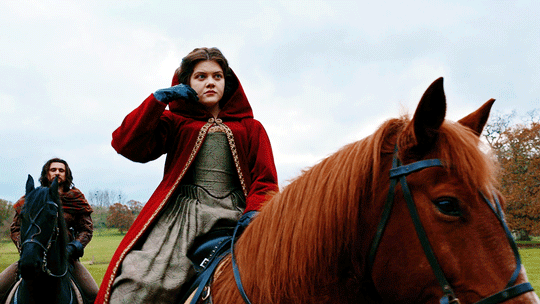

Daughter of King Herny VII and Elizabeth of York
Mother of James Stewart (Duke of Rothesay), Arthur Stewart (Duke of Rothesay), James V or Scotland, Alexander Stewart (Duke of Ross), Margaret Stewart (Countess of Lennox) and Dorothea Stewart
Wife of James IV of Scotland (m. 1503; died 1513), Archibald Douglas, 6th Earl of Angus (m. 1514; div 1527), and Henry Stewart, 1st Lord Methven (m. 1527)
Mother-in-law of Madeleine of France, Mary of Guise, and Matthew Stewart, 4th Earl of Lennox
Grandmother of James (Duke of Rothesay), Athur or Robert (Duke of Albany), Mary Stuart (Queen of Scots), James Stewart (Commander of Kelso and Melrose), James Stewart (1st Earl of Moray), Adam Stewart (Prior of Perth), James Stewart, John Stewart (Commander of Coldingham), Jean Stewart, Robert Stewart (1st Earl of Orkney; Commander of Holyrood), Henry Stewart (Lord Darnley), and Charles Stuart (1st Earl of Lennox)
4 notes
·
View notes
Text
MARKING THE FACE, CURING THE SOUL?: READING THE DISFIGUREMENT OF WOMEN IN THE LATER MIDDLE AGES
“It is taken as read that the sight of a mutilated female face could engender horror and shock in the medieval viewer, and that this generated (and possibly exaggerated) the reports we now have of its occurrence. It was precisely this response that the Franciscan missionary William of Rubruck intended to elicit when he reported his encounter with the wife of the Mongol leader ‘Scacatai’ in 1253.
William commented that: De qua credebam in veritate, quod amputasset sibi nasum inter oculos ut simior esset: nihil enim habebat ibi de naso, et unxerat locum ilium quodam unguento nigro, et etiam supercilia: quod erat turpissimum in oculis nostris. [I was really under the impression that she had amputated the bridge of her nose so as to be more snub-nosed, for she had no trace of a nose here, and she had smeared that spot and her eyebrows as well with some black ointment, which to us looked thoroughly dreadful.]
Elsewhere he deduced from this that such flatness was a marker of beauty within Mongol culture, and that ‘Quæ minus habet de naso pulchrior reputatur. Deturpant etiam turpiter pinguedine facies suas’ [the less nose one has, the more beautiful she is considered, and they disfigure themselves horribly, moreover, by painting their faces]. William’s comments are of course designed to convey to the western European readers of his report – most notably King Louis IX of France to whom he addressed it – the strangeness of his hosts.
Part of the process of ‘othering’ the Mongols was to draw contrasts between their behaviours and those of Westerners, and the appearance and practices of the women, although not strictly a matter with which a Franciscan friar should have been concerned, was just one noticeable difference among many. There is, however, another dimension to William’s sketch of the Mongol women: although he highlights the flatness of their noses as ‘hideous’ and attributes at least one case to deliberate surgery, he does not draw any comparisons about the meaning of this facial feature in his own world.
Yet the bridgeless or flattened nose was commonly thought in the later medieval West to be a sign of leprosy, which itself was associated with dubious morality, whilst a deliberately cut or maimed nose came increasingly to signify a punishment for sexual misdemeanour on the woman’s part. He left it to his readers to make such connections.
The Vita of St Margaret of Hungary (d. 1270), however, provides a striking counterpart to William’s text. For, against the same background of Mongol aggression, this Hungarian princess, given to the Dominican order in childhood, stated that, should the ‘Tartars’ invade Hungary, she would cut off her lips to ensure they found her so repulsive as to leave her unviolated.
Yet her hagiographer relates that when repelling (Western) suitors for her hand in marriage, she declared that she would rather cut off her nose and lips, and gouge out her eyes, than marry any of the three royal suitors proposed. Herein lies the paradox of facial damage for women.
The account of Margaret’s threat of self-mutilation to preserve her virginity against both pagan aggressors and Christian suitors belonged to a long tradition of ‘the heroics of virginity’: St Brigit of Ireland was said to have gouged out her own eye to avoid marriage, whilst one of the most celebrated cases of collective self-mutilation was that of Abbess Ebba and the nuns at Coldingham in England, faced with the prospect of Viking invaders.
Nevertheless the action that Margaret was proposing – which in the context of the approaching pagan Mongols had strong parallels with Ebba’s –would not only leave her open to wound-related infection or even death, but also render her face similar to mutilated criminals, adulterers, pimps and fornicators.
A generation earlier than William’s expedition and Margaret’s vita, legal texts were being promulgated in southern Europe which threatened the slitting of women’s noses (and thus flattening them in grotesque form) for instances of sexual misdemeanours. For example, the laws of Frederick II for Sicily (based on earlier provisions of King Roger II) imposed nose-slitting on adulteresses and mothers who pimped their daughters.
The chronology matters: such a measure had been unknown in western Europe before the eleventh century (although, as we have seen, it was mentioned in earlier Byzantine law). Thus earlier examples of threatened or actual self-mutilation differed starkly from Margaret’s message to her parents: if they forced her to break her monastic vow, they gave her no choice but to carry out an action that would reduce her –irremediably – to the status of marked whore.
The fear of sexual violation, then, drove Margaret’s intention to maim herself, mirroring contemporary legal punishments for sexual and other transgressions. Like most of the cases considered in this chapter, however, it was merely the threat of self-mutilation, rather than its actual practice, that was an effective deterrent. This is a point somewhat overlooked by those convinced that the high and late Middle Ages were a theatre of cruelty.
Moreover, we need to ask how Margaret’s religious commitment, and its subsequent reporting in hagiography, may or may not reflect the secular world. The records we have of actual judicial processes often stop at a court’s verdict – the sentence of mutilation, rather than its actual execution – and women form a very small minority of those so sentenced. In fact, cases of women actually being judicially mutilated are quite rare, and not all examples were for cases of immorality.
Helen Carrel has argued that ‘The threat of harsh punishment, which was then ultimately remitted, was a set piece of medieval legal practice’, and suggests that, although mutilation was prescribed for many offences, it was rarely put into practice after the late thirteenth century. Margaret’s threat, therefore, might be understood as just that – its extremity designed to convey her deep-seated religious commitment through the idea of radical, physical self-harm, invoking an image in the reader’s mind but not carried out in practice.
Elsewhere in the secular world, the late fifteenth- and early sixteenth-century German and Swiss urban records studied by Groebner reveal definitive evidence of actual facial mutilation taking place, but the targeting of the face of suspected or actual adulterers outlasted formal, juridical ‘mirror punishments’ by the authorities by the fifteenth century, and seems to have been an extreme, and unsanctioned, act of anger carried out on the face of a spouse suspected of adultery, or her/his lover, or even on the innocent partner of the lover.
Such ‘private’ attacks, Groebner suggests, were still driven by the association of adultery with facial punishment, but these incidents make it into the records so that the attackers might be censured (somewhat lightly, given the injuries they inflicted). This unofficial understanding of violent, facial punishment against women for their perceived lapses may already have been an accepted social norm in other regions by the thirteenth century.
Again, evidence comes from the records of proceedings against the perpetrator of the violence. A hearing before the podestà’s court in Venice in May 1291 centred on the assault of Bertholota Paduano of Torcello by a priest from the island of Burano. Bertholota testified that when she defended her friend Maria against the priest’s slanderous words: et percussit dictam Bertholotam sub oculo sinistro cum digito, et postea cum pugno bis per caput, scilicet semel per vultum iuxta nasum, talieter quod sanguis exivit ei per buccam et per nasum et alia vice iuxta aurem, et postea iniuravit ei dicens, ‘Turpis vilis meretrix, nunc aliquantulum feci vincdictam [sic] de te, vade acceptum bastardos quos fecisti de Valentio, quia sum dolens et tristis quod non proieci ipsam in aquam’.
[The above parish priest raised his hand and hit the above Bertholota with his hand below her left eye, and then twice with his fist on her head: that is, on her face by her nose, so that blood began to flow from her mouth and nose, and another way by her ear, and afterwards he injured her, saying: ‘You shameful and vile whore, now I have given you a little punishment [my emphasis], go, and take the bastards you had by Valentio with you, for I am grieving and sad that I did not throw her [Maria] in the water.’]
Further witnesses added that they heard the priest say, ‘Illa turpis meretrix; modo feci quod cupivi et, nisi fuisset pro presbitero qui eam defensavit, male apparassem eam.’ [‘She is a filthy whore; now I have done what I wanted to do, and had it not been for the priest who defended her, it would have gone badly for her.’] We do not know how this case ended – presumably the clerical perpetrator of the assault would have objected to being hauled up before the secular podestà’s court and the case may well have been referred to his clerical superiors, which would explain the lack of sentencing as it survives in the podestà’s records.
What the hearing did to Bertholota’s reputation is also unknown, but the record is revealing in how it presents the case, and what it chooses to include. Arguably, the victim’s physical appearance after the attack (temporarily bloodied face and black eyes, and more permanently a probable broken nose) would have raised questions about her status as a respectable woman, but it is striking that she is named in the record whilst her assailant is not, and that her reputation as a whore was rehearsed in court (twice) and then written down.
The case itself may therefore have been more punitive on her than on him, and this may have been the latter’s intention. He was, after all, a priest, and may well have considered himself within his rights to challenge Bertholota’s (and Maria’s, for that matter) way of conducting their lives, particularly if Bertholota’s children had been born out of wedlock as the record suggests. But it is clear that there was a distinction to be drawn between legally-sanctioned punishment, controlled by the Venetian state, and the violence occasioned by this individual’s sense of outrage against the women.
Religion is present here of course – the assailant was a priest – but his actions were hardly designed to bring Bertholota to repentance. The theme of the punished fornicator brings us to our second holy woman, in the form of St Margaret of Cortona. Her lengthy vita, consisting almost entirely of Margaret’s dialogues with Christ (and thus effectively positioning her in a face-to-face relationship with him), centres on Margaret’s remorse at her previous life of sexual freedom that had resulted in her bearing an illegitimate child.
Margaret was apparently strikingly beautiful, and the motif of denying this beauty recurs throughout the life, as she struggles ever closer to her true love, Christ himself. Early in the life Christ says: ‘Recordare, quod tui aspectus decorem, quem hactenus in mei magnam injuriam conservare conata es, imo et augere, adeo abhorrere et odire coepisti, ut nunc abstinentia, nunc lapidis allisione, nunc pulveris ollarum appositione, nunc diminutione frequenti sanguinis, delere desiderasti.’
[‘Remember how you previously endeavoured to maintain and even increase your beautiful appearance, much to my injury, and now you have begun to abhor and hate it, so that now you desire to rub it out with fasting, by dashing your skin with stones, by covering it with dust, and by frequent bleeding.’]
But such trials are not yet enough – when Margaret asks Christ to call her ‘daughter’, he replies rather tersely, ‘Non adhuc vocaberis filia, quia filia peccati es; cum vero a tuis vitiis integraliter per generalem confessionem iterum purgata fueris, te inter filias numerabo’ [‘You won’t be called daughter yet, for you are the daughter of sin. Only when you are completely purged of your vices by constant confession, then I will count you among my daughters.’].
This handily reminds us that Margaret had to overcome not only her past life, but her very status as woman, as a daughter of Eve, whose original sin marked her with a sexuality that fasting, scarification and the denial of bodily comforts could only control, not destroy. Margaret’s request to become a recluse is also refused, by God, who has other plans for her.
The vita was written by Margaret’s confessor, and he has a major role to play as she becomes increasingly frustrated by her failure to achieve her goal. Seeing that her abstinence is not destroying the beauty of her face fast enough, she secretly hides a razor and asks her confessor’s permission to use it to cut off her nose and top lip, for ‘Et merito, inquit, hoc vigilanter desidero, quia vultus mea decor multorum animas vulneravit’ [‘I deserve it and strongly wish it, since the beauty of my face has injured the souls of many’].
But he refuses permission, and threatens not to hear her confession again if she carries out her intent. Margaret’s later request to Christ, to afflict her with leprosy, meets a similar refusal. If she wanted to reach Christ, the message appears to be that she had to do it the hard way, not by quick solutions such as enclosure, self-harm or disease.”
- Patricia Skinner, Medicine, Religion, and Gender in Medieval Culture
#cw: racism#cw: self harm#beauty#gender#religion#medieval#christian#patricia skinner#medicine religion and gender in medieval culture
2 notes
·
View notes
Text

SAINTS OF THE DAY FOR APRIL 02
Bl. Peter Verhun, Roman Catholic Priest and Martyr. Peter was a priest for Ukrainian Catholics at Berlin, Germany. Apostolic Visitor to Germany. Peter was arrested for his faith in 1945, and exiled to Siberia. Feastday April 2
St. Pedro Calungsod, Roman Catholic Filipino Martyr. While missionary work in Guam along with Diego San Vitores were both murdered after baptizing an infant and mother who converted to the Roman Catholic faith. Feastday April 2
St. Ebba the Younger, Roman Catholic Nun. Abbess of Coldingham, England, on the Scottish border, called “the Younger.” She and her nuns were martyred by Danes in an invasion. She mutilated her face to discourage rape by the invading Danes. The raiders set fire to Coldingham, killing all of the nuns. Feastday April 2
Bl. Tarsykia Matskiv, Roman Catholic Nun. On the morning of 17 July 1944 at 8 a.m., a Russian soldier rang the convent door. When Sr Taryskia answered the door she was shot without warning and died. .Feastday Apr.2
Bl. Olha Olympia Bida, Roman Catholic Nun. She was arrested with two other sisters, imprisoned for a while, then exiled to the Tomsk region of Siberia.Under conditions of heavy forced labour, Succumbing to a serious illness, she died on 28 January 1952.Feastday Apr.2
Bl. Simeon Lukach Roman Catholic Priest and Bishop. On 26 October 1949 he was arrested by the NKVD and was released on 11 February 1955. He functioned as an underground member of the clergy, but in July 1962 he was arrested for a second time and appeared in court with Bishop Ivan Sleziuk, who too was an underground bishop. While in prison, he was stricken with tuberculosis, which hastened his death. Feastday April 2
ST. MARY OF EGYPT (SAINT MARY AEGYPTICA), PENITENT Born in Alexandria, at the age of 12 she ran away from home and became a prostitute. When she reached Jerusalem at the age of 29, an inner voice kept her from entering the Basilica. She repented and went to the desert, where she wandered for 47 years and received the Eucharist from the monk Zosimus. April 2
ST. FRANCIS OF PAOLA , HERMIT, FOUNDER OF THE ORDER OF MINIMS, Founder of the Order of the Minims, patron saint of Calabria and of the Italian seafarers, he is venerated as a thaumaturge and protector of the poor, who in the Kingdom of Naples ruled by the Angevins, suffered from serious neglect and injustice. St. Francis of Paola - Information on the Saint of the Day - Vatican Newshttps://www.vaticannews.va/en/saints/04/02/st---francis-of-paola---hermit--founder-of-the-order-of-minims.html
0 notes
Text
Holidays 1.31
Holidays
Appreciate Your Social Security Check Day
Backwards Day
Brexit Day (UK)
Broccoli Day (French Republic)
Child Labor Day
Dicing for Maid's Money Day (Surrey, UK)
Eve of Brigantia (Ireland)
Final Fantasy VIII Day (Japan)
Feast of Great Typos
Hell Is Freezing Over Day
Hug an Economist Day
Inspire Your Heart With Art Day
International Day for the Elimination of Violence Against Men & Boys
International Day of the Magicians
International Omphalocele Awareness Day
International Street Children’s Day
International Zebra Day
Jackie Robinson Day
Me-Dam-Me-Phi (Assam, India)
National Appreciation Day for Catholic Schools
National Bug Busting Day (UK)
National Gorilla Suit Day (Don Martin, in Mad Magazine)
National Music Therapy Day (Mexico)
National Pick on Lindsay Day
National Punk Day
National Seth Day
Play An Old Game You Haven't Played In Years Night
Rabbit Rabbit Day [Last Day of Every Month]
Saint Brigid’s Eve (Ireland)
Scotch Tape Day
Street Children's Day (Austria)
St. Veronus' Day (patron saint of Lembeek & Belgian brewers)
Thermos Bottle Day
Train Hijacking Day
Tupiza New Year (Indigenous Bolivia)
Twist Off Cap Day
Food & Drink Celebrations
Brandy Alexander Day
Day of Russian Vodka
Eat Brussels Sprouts Day
National Hot Chocolate Day
World Vegan Chocolate Day
5th & Last Wednesday in January
Bell Let’s Talk Day (Canada) [Last Wednesday]
Independence & Related Days
Ladoland (Declared; 2016) [unrecognized]
Nauru (from Australia, 1968)
Varladia (Declared; 2022) [unrecognized]
New Year’s Days
Año Nuevo en Tupiza (Tupiza New Year; Indigenous Bolivia)
Festivals Beginning January 31, 2024
Calabash South Africa (Capetown, South Africa)
Carnival of Santa Cruz de Tenerife (Santa Cruz de Tenerife, Spain) [thru 2.18]
Cattlecon (Orlando, Florida) [thru 2.2]
Festival of Literature (Dubai, UAE) [thru 2.6]
La Folle Journée (Nantes, France) [thru 2.4]
NBBQA (National Barbecue & Grilling Association) National Conference (San Antonio, Texas) [thru 2.3]
Southern Farm Show (Raleigh, North Carolina) [thru 2.2]
Feast Days
Adamant of Coldingham (Christian; Saint)
Amartithi (Meher Baba; India)
Anacreon (Positivist; Saint)
Banyu Pinaruh (Water Purification Ceremony; Bali)
Celebration of the Triple Goddess (Goddess of the Moon and the Seasons; Old European Lunar New Year) [Thru 2.3]
Cyrus and John (Christian; Martyrs)
Day of Hecate (Goddess of Crossroads; Starza Pagan Book of Days)
Dicing for Maid’s Money (Guildford, UK)
Disablot (Norse celebration of new beginnings)
Disfest (Sacrifice Honoring the Disir, all female relatives from forever)
Domitius (Domice) of Amiens (Christian; Saint)
Eusebius (Christian; Martyr)
Feast of Isis (Ancient Egypt)
Festival of Transmission Errors
Francis Xavier Bianchi (Christian; Saint)
Geminianus (Christian; Saint)
Honey Badger Avoidance Day (Pastafarian)
Imbolc Eve (Celtic Book of Days)
Imbolc Eve: Day of the Bean Sidhe (Pagan)
John Bosco (Christian; Saint)
Julius of Novara (Christian; Saint)
Ludovica (Christian; Blessed)
Máedóc (a.k.a. Maidoc, Mogue, Aidan, Aiden; Christian; Saint)
Marcella (Christian; Saint)
Mary the Gorilla (Muppetism)
Max Pechstein (Artology)
Me-Dam-Me-Phi (Ahom Veneration of the Dead; Assam, India)
Navajo Sing (Preparation Festival for Coming Agricultural Season) [Through 2.8]
Nicetas of Novgorod (Christian; Saint)
Norman Mailer (Writerism)
Peter or Pedro Nolasco (Christian; Saint)
Rodolphe Töpffer (Artology)
Samuel Shoemaker (Episcopal Church (USA))
Seapion (Christian; Saint)
Theodore Kaczinski Day (Church of the SubGenius; Saint)
Tysul (Christian; Saint)
Ulphia (Christian; Virgin)
Valkyries’ Day (Norse)
Veronus (Christian; Saint) [Lembeek & Belgian brewers]
Wilgils (Christian; Saint)
Lucky & Unlucky Days
Prime Number Day: 31 [11 of 72]
Tomobiki (友引 Japan) [Good luck all day, except at noon.]
Premieres
Ali Baba (ComicColor Cartoon; 1936)
All My Children (TV Soap Opera; 1949)
The Autobiography of Miss Jane Pittman (TV Film; 1974)
Barney’s Hungry Cousin, featuring Barney Bear (MGM Cartoon; 1953)
Being and Time, by Martin Heidegger (Philosophy Book; 1927)
Bellerophon, by Jean-Baptiste Lully (Opera; 1679)
Black Sunday, by Thomas Harris (Novel; 1975)
Cheerful Little Pierful or Bomb Voyage (Rocky & Bullwinkle Cartoon, S1, Ep. 19; 1960)
Down and Out in Beverly Hills (Film; 1986)
Family Guy (Animated TV Series; 1999)
Gia (Film; 1998)
The Green Hornet (Radio Series; 1936)
Key & Peele (TV Series; 2012)
The Lone Ranger (Radio Series; 1933)
McDougal’s Rest Farm (Terrytoons Heckle & Heckle Cartoon; 1947)
A Mouse Divided (WB MM Cartoon; 19353
Mr. & Mrs. Smith (Film; 1941)
Murphy’s Romance (Film; 1986)
Mystery Girl, by Roy Orbison (Album; 1989)
Pagan Moon (WB MM Cartoon; 1932)
A Perfect Day for Bananafish, by J.D. Salinger (Short Story; 1948)
Ragnarok (TV Series; 2020)
The Saint on the Spanish Main, by Leslie Charteris (Short Stories 1955) [Saint #31]
The Soup Song, featuring Flip the Frog (Ub Iwerks Cartoon; 1931)
The Spiderwick Chronicles (Film; 2008)
Summer Squash or He’s Too Flat for Me (Rocky & Bullwinkle Cartoon, S1, Ep. 20; 1960)
Teddy, by J.D. Salinger (Short Story; 1953)
These Are My Children (TV Soap Opera; 1949) [1st TV Soap Opera]
Thoughts In Solitude, by Thomas Merton (Spiritual Book; 1956)
The Village Smitty, featuring Flip the Frog (Ub Iwerks Cartoon; 1931)
The Witness for the Prosecution, by Agatha Christie (Short Story; 1948)
The Wonder Years (TV Series; 1988)
Today’s Name Days
Johannes, Marcella (Austria)
Ivan, Julije, Vanja (Croatia)
Marika (Czech Republic)
Vigilius (Denmark)
Meeland, Meelik, Meelis, Meelit, Meelitu, Meelo, Meelu (Estonia)
Alli (Finland)
Marcelle (France)
Johannes, Marcella, Rudbert (Germany)
Evdoxia, Kyros (Greece)
Gerda, Marcella (Hungary)
Geminiano, Giovanni (Italy)
Dekla, Jalna, Tekla, Tikla, Violeta (Latvia)
Astra, Budvilė, Marcelė, Skirmantas (Lithuania)
Idun, Ivar (Norway)
Cyrus, Euzebiusz, Jan, Ksawery, Ludwik, Marceli, Marcelin, Marcelina, Piotr, Spycigniew, Wirgiliusz (Poland)
Chir, Ioan (Romania)
Ksenia (Russia)
Emil (Slovakia)
Juan, Marcela (Spain)
Ivar, Joar (Sweden)
Cyrus, Kira, Kyra, Lona, Loni, Lonnie, Scarlett, Zane (USA)
Today is Also…
Day of Year: Day 31 of 2024; 335 days remaining in the year
ISO: Day 3 of week 5 of 2024
Celtic Tree Calendar: Luis (Rowan) [Day 11 of 28]
Chinese: Month 12 (Yi-Chou), Day 21 (Jia-Wu)
Chinese Year of the: Rabbit 4721 (until February 10, 2024)
Hebrew: 21 Shevat 5784
Islamic: 20 Rajab 1445
J Cal: 1 Grey; Oneday [1 of 30]
Julian: 18 January 2024
Moon: 71%: Waning Gibbous
Positivist: 3 Homer (2nd Month) [Anacreon)
Runic Half Month: Elhaz (Elk) [Day 7 of 15]
Season: Winter (Day 42 of 89)
Zodiac: Capricorn (Day 10 of 28)
Calendar Changes
Grey (Month 2 of 12; J Calendar)
1 note
·
View note
Text
Holidays 1.31
Holidays
Appreciate Your Social Security Check Day
Backwards Day
Brexit Day (UK)
Broccoli Day (French Republic)
Child Labor Day
Dicing for Maid's Money Day (Surrey, UK)
Eve of Brigantia (Ireland)
Final Fantasy VIII Day (Japan)
Feast of Great Typos
Hell Is Freezing Over Day
Hug an Economist Day
Inspire Your Heart With Art Day
International Day for the Elimination of Violence Against Men & Boys
International Day of the Magicians
International Omphalocele Awareness Day
International Street Children’s Day
International Zebra Day
Jackie Robinson Day
Me-Dam-Me-Phi (Assam, India)
National Appreciation Day for Catholic Schools
National Bug Busting Day (UK)
National Gorilla Suit Day (Don Martin, in Mad Magazine)
National Music Therapy Day (Mexico)
National Pick on Lindsay Day
National Punk Day
National Seth Day
Play An Old Game You Haven't Played In Years Night
Rabbit Rabbit Day [Last Day of Every Month]
Saint Brigid’s Eve (Ireland)
Scotch Tape Day
Street Children's Day (Austria)
St. Veronus' Day (patron saint of Lembeek & Belgian brewers)
Thermos Bottle Day
Train Hijacking Day
Tupiza New Year (Indigenous Bolivia)
Twist Off Cap Day
Food & Drink Celebrations
Brandy Alexander Day
Day of Russian Vodka
Eat Brussels Sprouts Day
National Hot Chocolate Day
World Vegan Chocolate Day
5th & Last Wednesday in January
Bell Let’s Talk Day (Canada) [Last Wednesday]
Independence & Related Days
Ladoland (Declared; 2016) [unrecognized]
Nauru (from Australia, 1968)
Varladia (Declared; 2022) [unrecognized]
New Year’s Days
Año Nuevo en Tupiza (Tupiza New Year; Indigenous Bolivia)
Festivals Beginning January 31, 2024
Calabash South Africa (Capetown, South Africa)
Carnival of Santa Cruz de Tenerife (Santa Cruz de Tenerife, Spain) [thru 2.18]
Cattlecon (Orlando, Florida) [thru 2.2]
Festival of Literature (Dubai, UAE) [thru 2.6]
La Folle Journée (Nantes, France) [thru 2.4]
NBBQA (National Barbecue & Grilling Association) National Conference (San Antonio, Texas) [thru 2.3]
Southern Farm Show (Raleigh, North Carolina) [thru 2.2]
Feast Days
Adamant of Coldingham (Christian; Saint)
Amartithi (Meher Baba; India)
Anacreon (Positivist; Saint)
Banyu Pinaruh (Water Purification Ceremony; Bali)
Celebration of the Triple Goddess (Goddess of the Moon and the Seasons; Old European Lunar New Year) [Thru 2.3]
Cyrus and John (Christian; Martyrs)
Day of Hecate (Goddess of Crossroads; Starza Pagan Book of Days)
Dicing for Maid’s Money (Guildford, UK)
Disablot (Norse celebration of new beginnings)
Disfest (Sacrifice Honoring the Disir, all female relatives from forever)
Domitius (Domice) of Amiens (Christian; Saint)
Eusebius (Christian; Martyr)
Feast of Isis (Ancient Egypt)
Festival of Transmission Errors
Francis Xavier Bianchi (Christian; Saint)
Geminianus (Christian; Saint)
Honey Badger Avoidance Day (Pastafarian)
Imbolc Eve (Celtic Book of Days)
Imbolc Eve: Day of the Bean Sidhe (Pagan)
John Bosco (Christian; Saint)
Julius of Novara (Christian; Saint)
Ludovica (Christian; Blessed)
Máedóc (a.k.a. Maidoc, Mogue, Aidan, Aiden; Christian; Saint)
Marcella (Christian; Saint)
Mary the Gorilla (Muppetism)
Max Pechstein (Artology)
Me-Dam-Me-Phi (Ahom Veneration of the Dead; Assam, India)
Navajo Sing (Preparation Festival for Coming Agricultural Season) [Through 2.8]
Nicetas of Novgorod (Christian; Saint)
Norman Mailer (Writerism)
Peter or Pedro Nolasco (Christian; Saint)
Rodolphe Töpffer (Artology)
Samuel Shoemaker (Episcopal Church (USA))
Seapion (Christian; Saint)
Theodore Kaczinski Day (Church of the SubGenius; Saint)
Tysul (Christian; Saint)
Ulphia (Christian; Virgin)
Valkyries’ Day (Norse)
Veronus (Christian; Saint) [Lembeek & Belgian brewers]
Wilgils (Christian; Saint)
Lucky & Unlucky Days
Prime Number Day: 31 [11 of 72]
Tomobiki (友引 Japan) [Good luck all day, except at noon.]
Premieres
Ali Baba (ComicColor Cartoon; 1936)
All My Children (TV Soap Opera; 1949)
The Autobiography of Miss Jane Pittman (TV Film; 1974)
Barney’s Hungry Cousin, featuring Barney Bear (MGM Cartoon; 1953)
Being and Time, by Martin Heidegger (Philosophy Book; 1927)
Bellerophon, by Jean-Baptiste Lully (Opera; 1679)
Black Sunday, by Thomas Harris (Novel; 1975)
Cheerful Little Pierful or Bomb Voyage (Rocky & Bullwinkle Cartoon, S1, Ep. 19; 1960)
Down and Out in Beverly Hills (Film; 1986)
Family Guy (Animated TV Series; 1999)
Gia (Film; 1998)
The Green Hornet (Radio Series; 1936)
Key & Peele (TV Series; 2012)
The Lone Ranger (Radio Series; 1933)
McDougal’s Rest Farm (Terrytoons Heckle & Heckle Cartoon; 1947)
A Mouse Divided (WB MM Cartoon; 19353
Mr. & Mrs. Smith (Film; 1941)
Murphy’s Romance (Film; 1986)
Mystery Girl, by Roy Orbison (Album; 1989)
Pagan Moon (WB MM Cartoon; 1932)
A Perfect Day for Bananafish, by J.D. Salinger (Short Story; 1948)
Ragnarok (TV Series; 2020)
The Saint on the Spanish Main, by Leslie Charteris (Short Stories 1955) [Saint #31]
The Soup Song, featuring Flip the Frog (Ub Iwerks Cartoon; 1931)
The Spiderwick Chronicles (Film; 2008)
Summer Squash or He’s Too Flat for Me (Rocky & Bullwinkle Cartoon, S1, Ep. 20; 1960)
Teddy, by J.D. Salinger (Short Story; 1953)
These Are My Children (TV Soap Opera; 1949) [1st TV Soap Opera]
Thoughts In Solitude, by Thomas Merton (Spiritual Book; 1956)
The Village Smitty, featuring Flip the Frog (Ub Iwerks Cartoon; 1931)
The Witness for the Prosecution, by Agatha Christie (Short Story; 1948)
The Wonder Years (TV Series; 1988)
Today’s Name Days
Johannes, Marcella (Austria)
Ivan, Julije, Vanja (Croatia)
Marika (Czech Republic)
Vigilius (Denmark)
Meeland, Meelik, Meelis, Meelit, Meelitu, Meelo, Meelu (Estonia)
Alli (Finland)
Marcelle (France)
Johannes, Marcella, Rudbert (Germany)
Evdoxia, Kyros (Greece)
Gerda, Marcella (Hungary)
Geminiano, Giovanni (Italy)
Dekla, Jalna, Tekla, Tikla, Violeta (Latvia)
Astra, Budvilė, Marcelė, Skirmantas (Lithuania)
Idun, Ivar (Norway)
Cyrus, Euzebiusz, Jan, Ksawery, Ludwik, Marceli, Marcelin, Marcelina, Piotr, Spycigniew, Wirgiliusz (Poland)
Chir, Ioan (Romania)
Ksenia (Russia)
Emil (Slovakia)
Juan, Marcela (Spain)
Ivar, Joar (Sweden)
Cyrus, Kira, Kyra, Lona, Loni, Lonnie, Scarlett, Zane (USA)
Today is Also…
Day of Year: Day 31 of 2024; 335 days remaining in the year
ISO: Day 3 of week 5 of 2024
Celtic Tree Calendar: Luis (Rowan) [Day 11 of 28]
Chinese: Month 12 (Yi-Chou), Day 21 (Jia-Wu)
Chinese Year of the: Rabbit 4721 (until February 10, 2024)
Hebrew: 21 Shevat 5784
Islamic: 20 Rajab 1445
J Cal: 1 Grey; Oneday [1 of 30]
Julian: 18 January 2024
Moon: 71%: Waning Gibbous
Positivist: 3 Homer (2nd Month) [Anacreon)
Runic Half Month: Elhaz (Elk) [Day 7 of 15]
Season: Winter (Day 42 of 89)
Zodiac: Capricorn (Day 10 of 28)
Calendar Changes
Grey (Month 2 of 12; J Calendar)
0 notes

